Physical Address
304 North Cardinal St.
Dorchester Center, MA 02124
This is due to non-neoplastic overgrowth of the adrenocortical cells of the zona fasciculate
More common in some inherited diseases (e.g. MEN 1/Beckwith–Weidman syndrome/Carney complex)
It is detected incidentally in up to 5% of CT examinations ▸ the number and size of any nodules increases with age (but generally they are <6 cm in diameter)
Most commonly seen in obese diabetics/elderly women
6% of 60 year olds have an adrenal adenoma (80% of these are benign non-functioning adenomas) ▸ in patients with a known malignancy, only 25–35% of adrenal masses are malignant
Biochemical evaluation: hyperfunctioning or non-hyperfunctioning status dictates further management
If there is no history of malignancy, a unilateral non-hyperfunctioning adrenal mass rarely, if ever, represents a metastasis (adenoma or carcinoma)
Smaller adrenal masses (<4 cm) are more likely to be benign (this is not a reliable indicator)
Adenomas have an increased intracellular lipid content ▸ if an adrenal mass measures ≤10 HU on a NECT, it is an adenoma (contrast imaging is not required) ▸ if NECT attenuation is >10 HU, it may be a lipid-poor adenoma-further imaging is required
Even lipid-poor tumours demonstrate a rapid washout of IV contrast medium

Histogram analysis method: ROI drawn over at least ![]() of the adrenal mass (excluding necrosis); pixel attenuation values are plotted against their frequency ▸ 97% of adenomas have negative pixels (metastases have no negative pixels)
of the adrenal mass (excluding necrosis); pixel attenuation values are plotted against their frequency ▸ 97% of adenomas have negative pixels (metastases have no negative pixels)
90% of adenomas demonstrate homogenous or ring enhancement (60% of malignant masses have heterogeneous enhancement) ▸ adenomas show early peak enhancement (the value of peak enhancement does not distinguish between adenomas and metastases) ▸ fat-rich adenomas will lose signal on out-of-phase imaging – quantitative analysis can be made using the adrenal – splenic ratio (the liver can be unreliable due to either fatty or iron deposition, and skeletal muscle can undergo fatty infiltration in the elderly)
Maximum SUV uptake is lower for adenomas than metastases; however 48% of adenomas demonstrate moderate and high FDG uptake and can mimic malignant masses (limiting its role) ▸ quantitative evaluation using a SUV cutoff of 2.68–3.0 has a high sensitivity and specificity for separating benign from malignant masses
False positive: adrenal adenoma/phaeochromocytoma/inflammatory lesions
False negative: adrenal metastases with haemorrhage or necrosis/small metastatic nodules/metastases from bronchioloalveolar carcinoma or carcinoid tumours
Phaeochromocytomas can have similar attenuation and washout characteristics as an adenoma; if concerned biochemical and clinical evaluation is required
Granulomatous infections (tuberculosis, histoplasmosis, or blastomycosis)
There is bilateral but asymmetric involvement of the adrenal glands ▸ with active infection the adrenal glands are enlarged and heterogeneous (particularly after contrast administration) ▸ they may demonstrate small non-enhancing areas of caseous necrosis (± calcification) during the acute phase or with healing ▸ long-standing infection can result in atrophy of the adrenal glands
AIDS patients with extrapulmonary Pneumocystis carinii infection: there may be punctuate or coarse calcification within the adrenal glands (as well as within the spleen, liver, kidney and lymph nodes)
Adrenal abscesses: these are rare, with most found in neonates with pre-existing adrenal haemorrhage ▸ an abscess will appear as a thick-walled cystic lesion
Results from primary adrenal insufficiency or secondary to hypothalamic-pituitary ACTH deficiency ▸ manifests when >90% of the gland destroyed ▸ acute (rare, and usually due to haemorrhage) or chronic
Primary insufficiency causes : autoimmune (commonest western cause)/TB (commonest worldwide cause)/AIDS/drugs/adrenal haemorrhage/Waterhouse–Friderichsen syndrome (in the context of septicaemia)/sarcoidosis/amyloidosis/haemochromatosis /congenital
Haemorrhage/haematoma: T1WI and T2WI signal evolves over time ▸ need to exclude an underlying mass lesion (e.g. metastases or melanoma) ▸ an underlying mass may demonstrate enhancement ▸ acute haemorrhage can precipitate an Addisonian crisis, chronic haemorrhage chronically calcify or turn cystic
Subacute Addison's disease: hypofunction <2 yrs ▸ usually secondary to adrenalitis – with adrenal hypertrophy ± central necrosis and rim enhancement
Calcification: usually seen in granulomatous disease (e.g. TB/sarcoidosis)
Chronic changes: the adrenal glands can be extremely small and may be difficult to identify
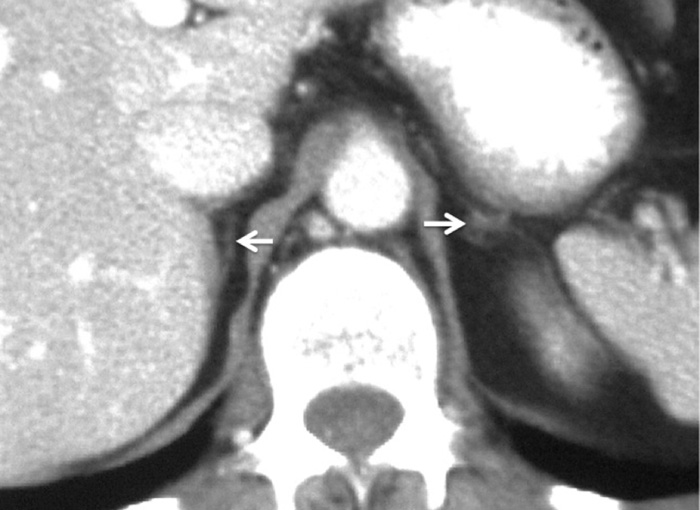
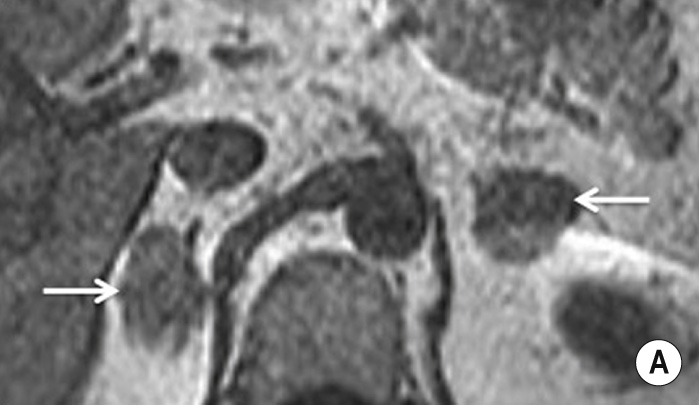
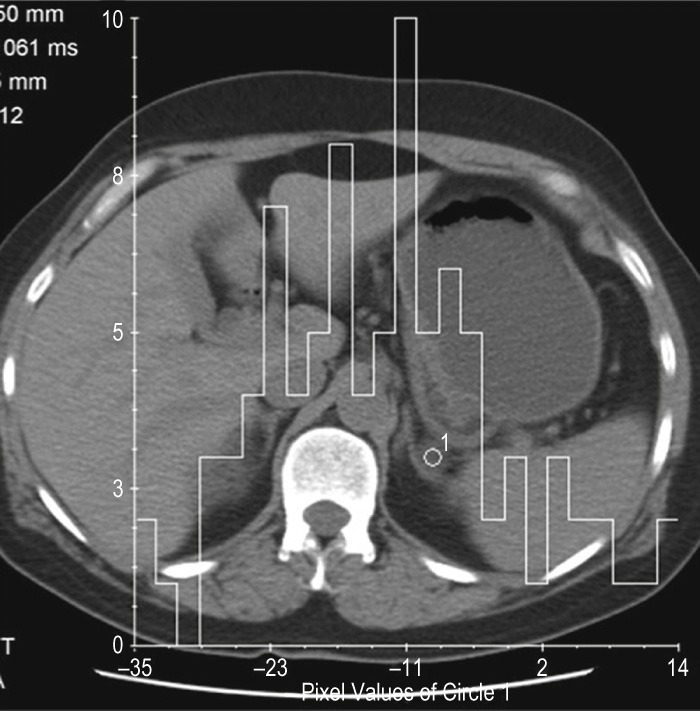
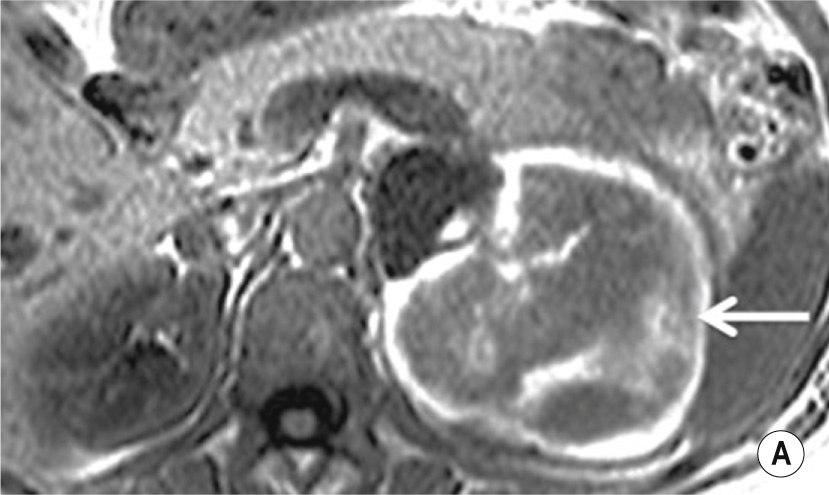
These are usually endothelial or epithelial in origin (they may also be parasitic) ▸ pseudocysts (following haemorrhage or necrosis) are more common
They are uncommon and usually unilateral (F>M)
If large can cause pain
Thin-walled cysts with fluid attenuation and signal characteristics ▸ they are non-enhancing ▸ there can be peripheral and curvilinear calcification (15% of cases)
T1WI: increased SI can be seen with the presence of proteinaceous material, infectious debris or haemorrhage
Solid components/thickened walls/septae suggest possible necrotic mass or infective cyst
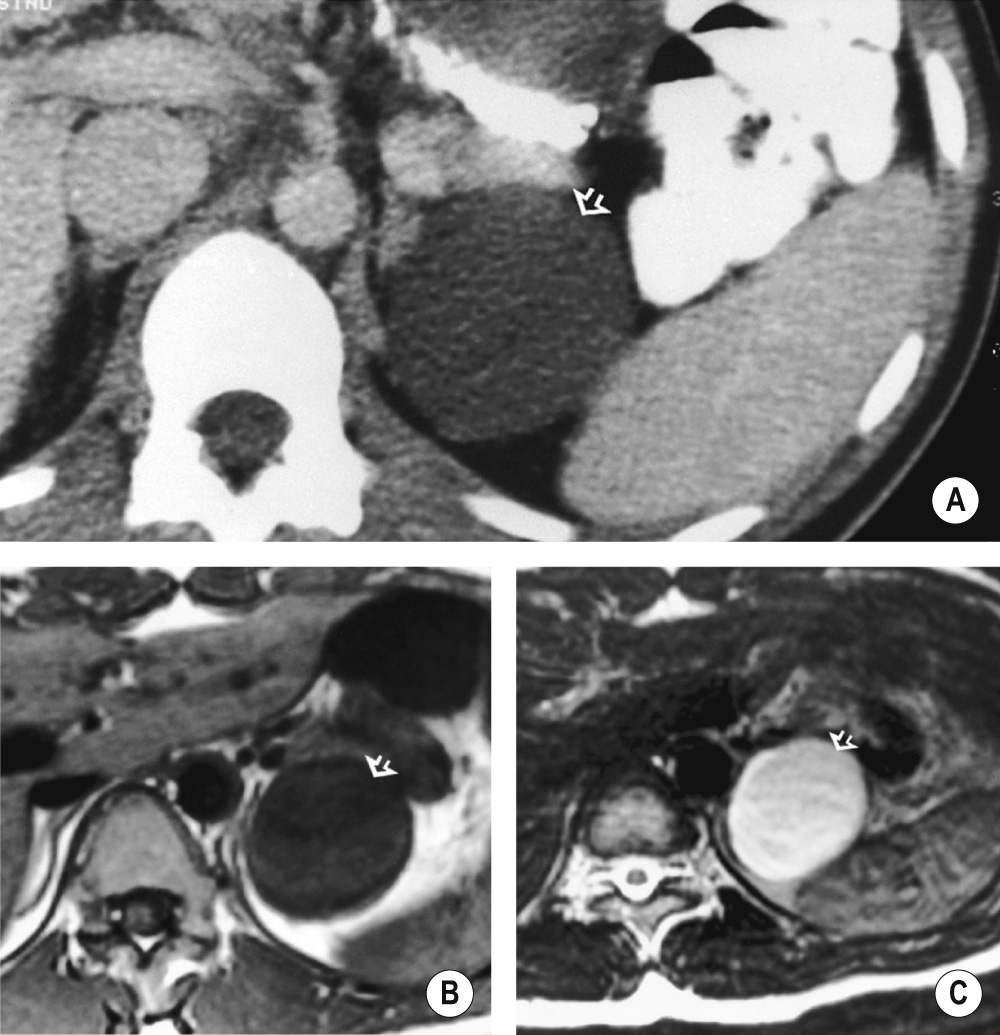
These most commonly follow tumours of the lung, kidney, breast, GI tract and ovary (and also with melanoma) ▸ they very rarely result in hypoadrenalism
A metastasis tends to be larger than an adenoma ▸ they are also heterogeneous, less well-defined and have a thick, irregular enhancing rim ▸ they are more commonly unilateral
T1WI: low SI (compared to liver) ▸ T2WI: high SI (compared to liver)
The presence of an adrenal mass in a patient with a known malignancy does not necessarily indicate the presence of metastatic disease: 40–50% of lesions are non-metastatic and represent adenomas (even bilateral adrenal masses are more likely to be adenomas rather than metastatic deposits)
It may require percutaneous biopsy if the primary is unknown
Increased likelihood of malignancy: size >4 cm ▸ rapid size increase
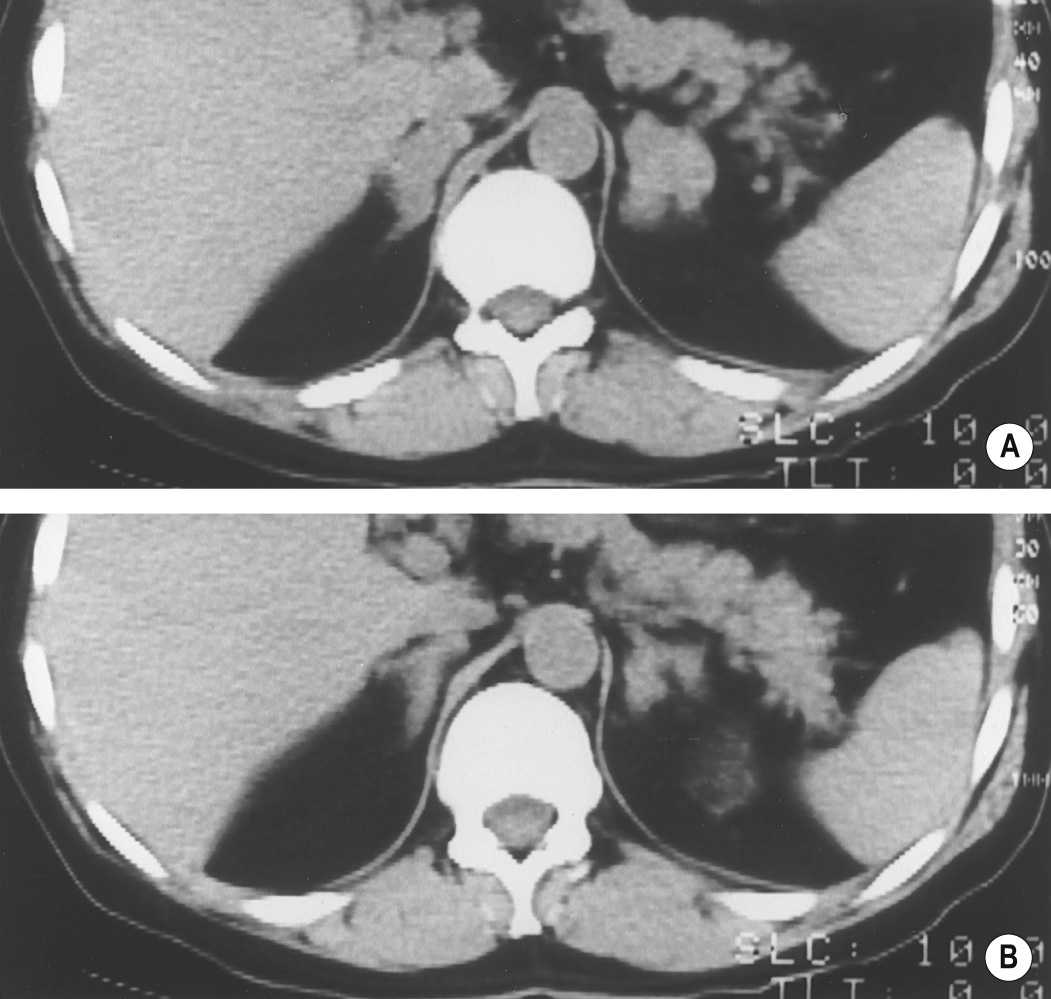
This is seen on CT in 2% of patients who sustain severe trauma
A round or oval well-defined adrenal haematoma (seen in the majority) is more common than uniform adrenal enlargement or diffuse irregular haemorrhage obliterating the gland
This is usually associated with: anticoagulants (or other bleeding disorders) ▸ recent surgery or severe burns ▸ sepsis (in particular meningococcal) leading to the Waterhouse–Friderichsen syndrome ▸ hypotension ▸ tumour (particularly a melanoma)
Haemorrhage is unilateral in the majority (R>L) ▸ calcification may develop after a few months ▸ occasionally a haematoma will liquefy and persists as a pseudocyst
Acute or subacute phase: the enlarged adrenals are of increased density (50–70 HU)
Later stages: there is reduced density and size of the lesion (which usually resolves)
Become a Clinical Tree membership for Full access and enjoy Unlimited articles
If you are a member. Log in here